
The next plate illustrated the rising and reduction of a salt diapir.
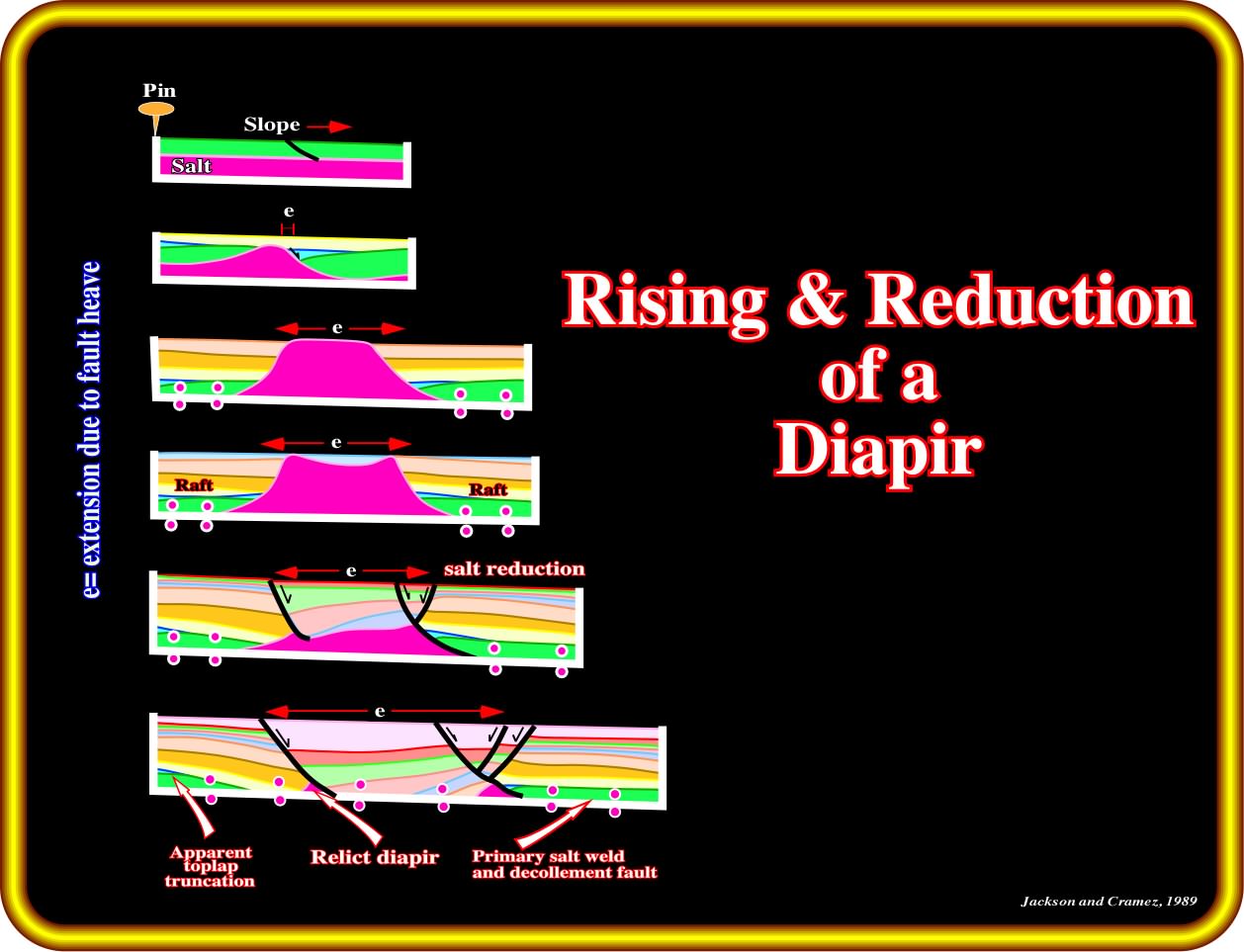
In this geological evolution, one can see that by compensatory subsidence a depocentre is developed in the overburden at the place of the diapir. In the same way, as the salt flows away, generally down-dip, salt welds and rafts (see next chapter) are developed, as well as a relict diapir. Very often, salt reduction is incomplete. The last stage (a continuous salt weld) is not reached. The evolution can stop when a depocentre is developed on the top of the diapir. In certain basins, or in particular areas, characterized by local compressional regimes tectonic, inversions are possible. Shortened depocenters can be recognized on the top of diapirs (see next plates).
Notice that in the sketch above :
- There is an initial slope on the top of the salt layer ;
- Since the diapir rises, depocenters are formed as well as salt welds and rafts ;
- The extension is underline by the fault heaves ;
- When salt reduction starts, the central depocentre is initiated ;
- Continuation of salt reduction creates relict diapir, a primary salt weld and a décollement fault ;
- Chronostratigraphic lines and reflection terminations can be tilted.
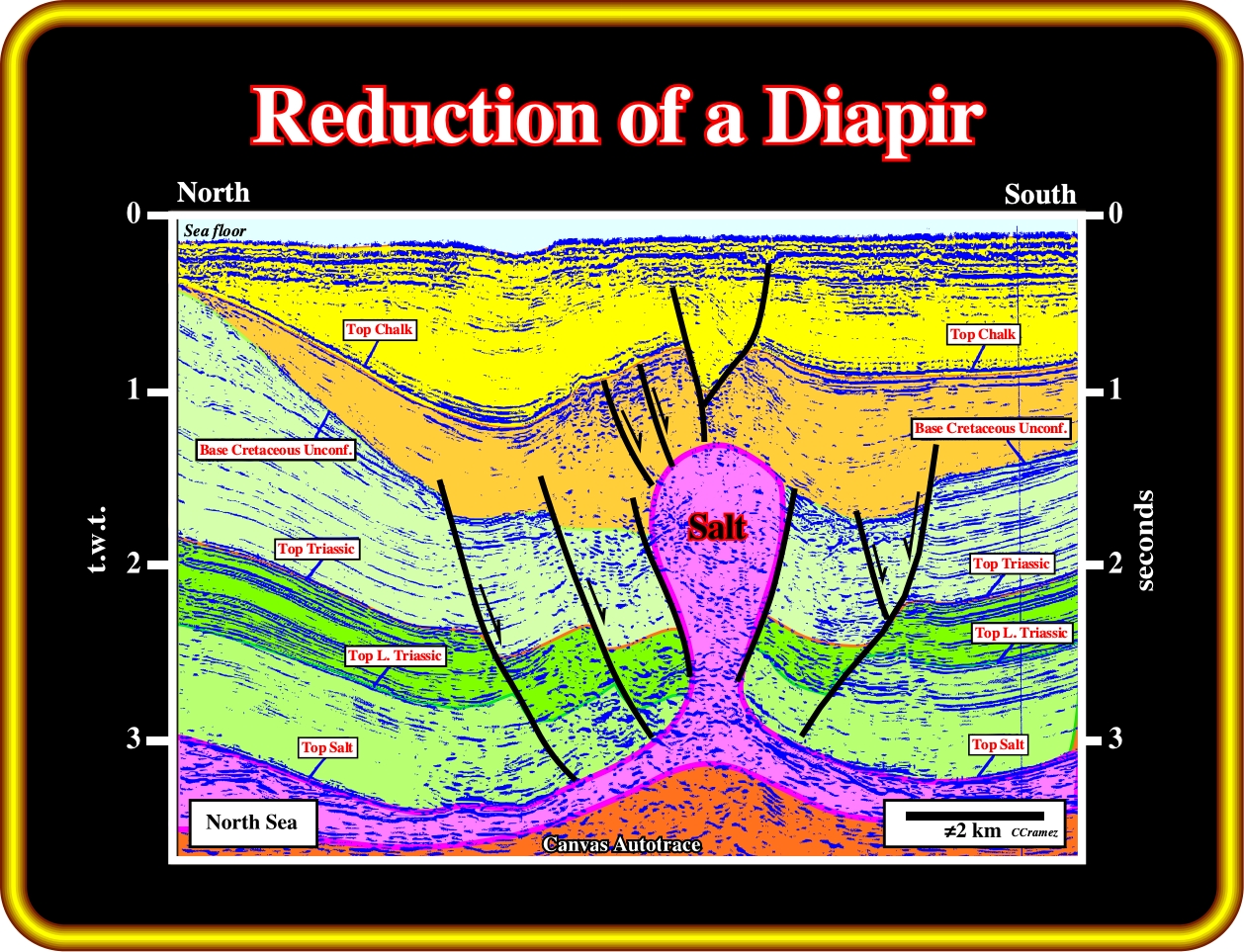
In spite of the fact that in this seismic line, from Southern North Sea, the vertical and horizontal scales are approximate, it is quite evident that the depocentre overlying the salt diapir was induced by a reduction of the salt structure. Indeed, the depocentre thickens inward, that is to say, toward the centre of the diapir. Later a slight compression shortened the depocentre creating a subtle inversion in the central part. Even more evident inversions of these depocentre are known in Angola offshore as illustrated in next plate.
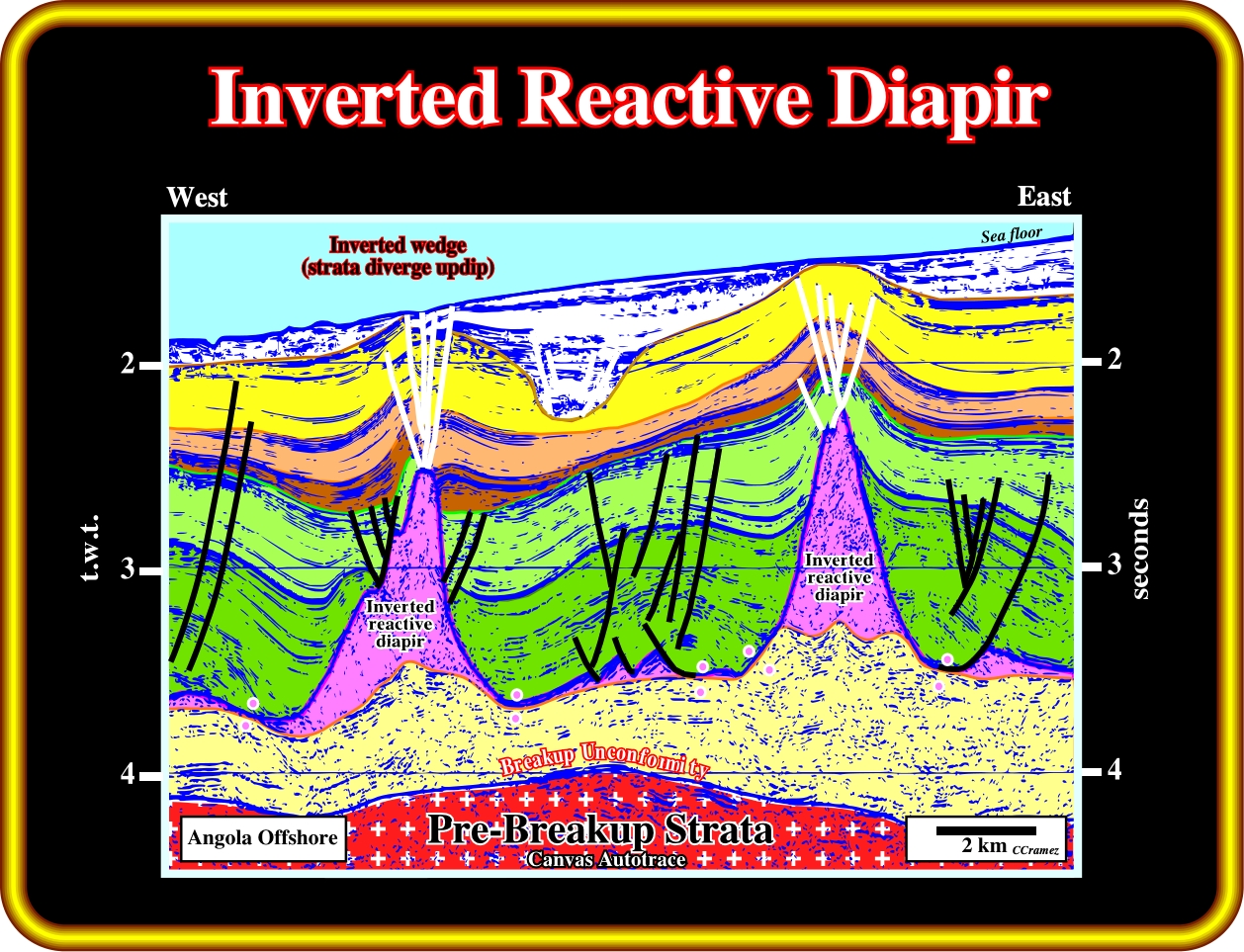
The tectonic inversions of the depocenters in the overburden associated with diapir reductions are well know in offshore Angola. Actually, when on a seismic line, a depocentre, that is to say, a convergent thickening interval, overlying a salt diapir, is in a high structural position, interpreters must hypothesize a tectonic inversion induced by a local, or regional, compressional tectonic regime. These tectonic inversions can be associated with regional shortening or local reactivation of the old pre-existent fault or fracture (see next plate).
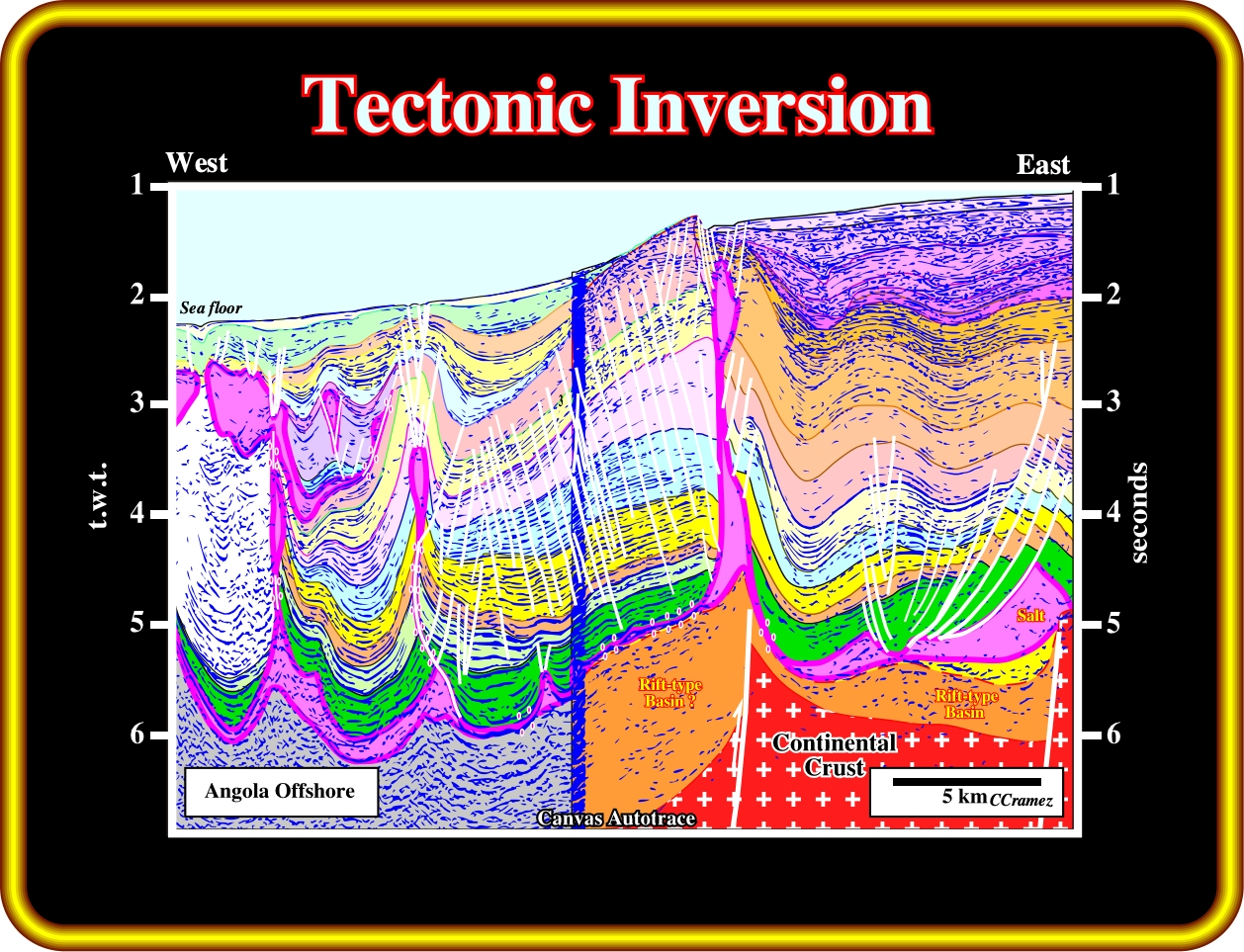
A reactivation of the pre-existent normal fault bordering a rift-type basin, in late Tertiary, created a tectonic inversion easy recognised on the bathymetry. A probable tectonic evolution of this structures illustrated on this line is proposed in next plate.
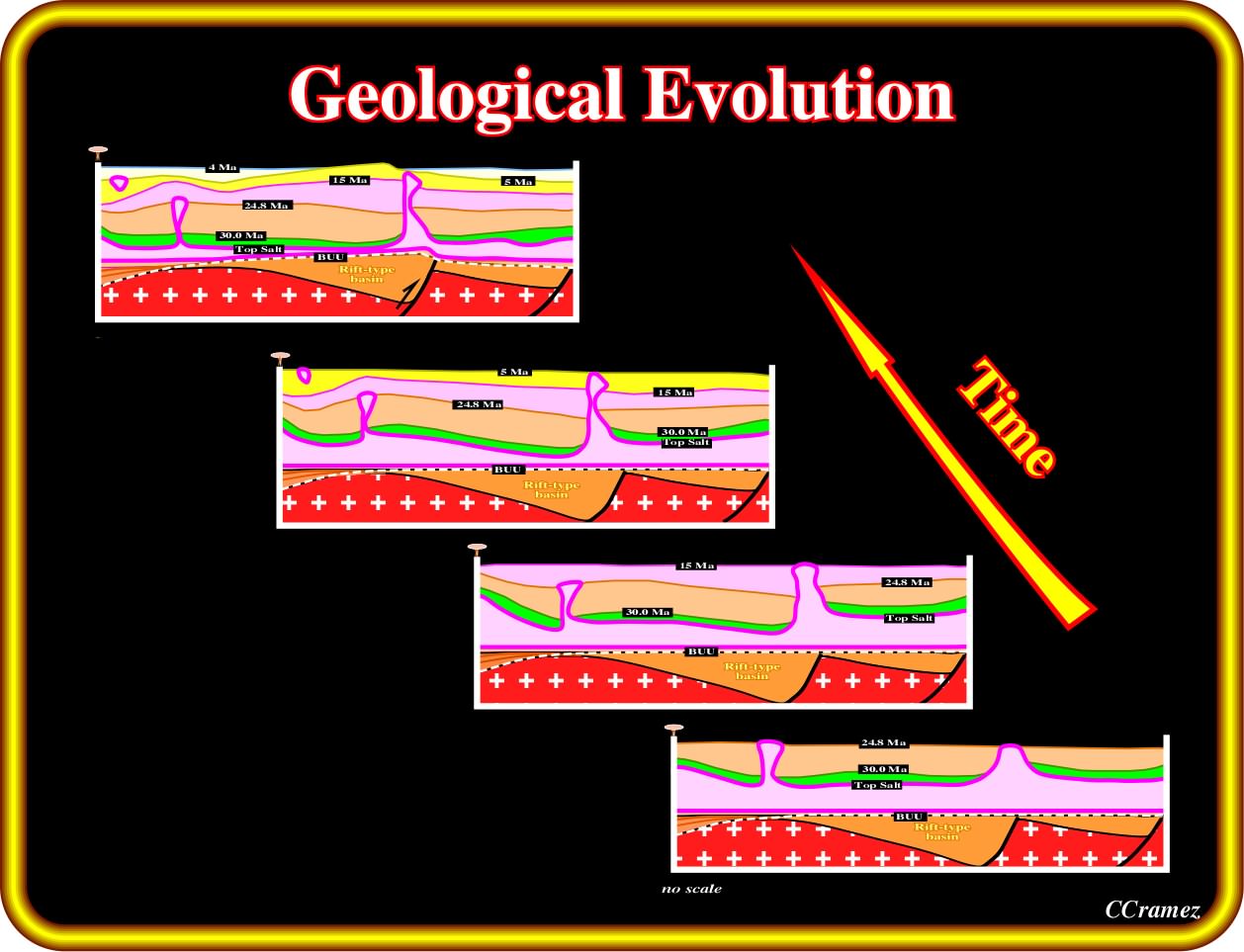
In this tectonic evolution, it is hypothesized that the Late Tertiary shortening of the overburden it is induce by the reactivation, in reverse fault, of a pre-existent normal faulting bordering a rift-type basin, which is easily recognized in the sub-salt strata. Due to the reactivation, locally, the lower structural points become high and the high structural points become lower points.
Exercise 1:
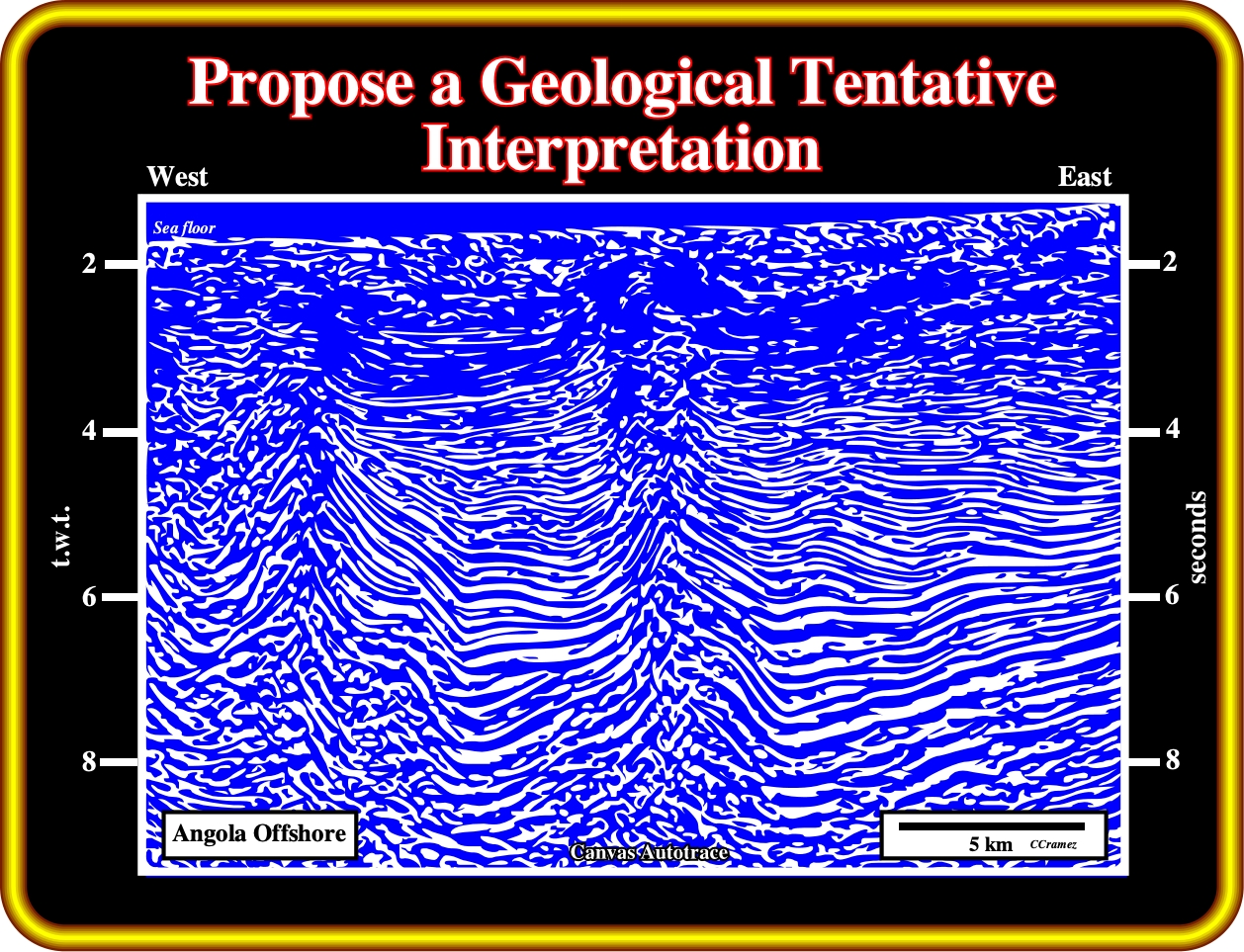
Here, you must recognize :
(i) A inverted reactive diapir ;
(ii) A step on the bottom of the salt ;
(iii) A potential fracture zone;
(iv) At least a translation onlap surface (there are two in fact).
Exercise 2:
Start to interpret the seismic line illustrated in the upper left corner of this plate. Give particular attention at the bottom of the autochthonous salt, limits of the allochthonous salt and potential salt welds (primary and secondary). Then, propose a geological tentative interpretation of the seiscrop, taking into account that the red line is the trace of the seismic profile and the yellow line, on the seismic line, indicates the depth of the seiscrop.
to continue press
next